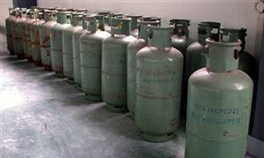India's journey towards sustainable cooling
Sustainability, for long, has been at the core of Indian lifestyle and its indigenous knowledge and sustainable practices have played a crucial role in helping people be informed and make environmentally
Sustainability, for long, has been at the core of Indian lifestyle and its indigenous knowledge and sustainable practices have played a crucial role in helping people be informed and make environmentally
In the early 1970s, scientists warned that anthropogenic chemicals containing chlorine (Cl) would lead to destruction of stratospheric ozone (O3), the protective veil that reduces the amount of harmful ultraviolet (UV) rays that reach the Earth
The second Chilling Facts survey has revealed some big improvements on last year. This year
Halogenated gases currently contribute 12% to overall radiative forcing. While actions under the Montreal Protocol on Substances that Deplete the Ozone Layer (Montreal Protocol) are already addressing CFCs and HCFCs, atmospheric concentrations of some HFCs (hydrofluorocarbons) are rising rapidly, by more than 23% each year.
Focuses on the issue of phasing down hydrofluorocarbon (HFC) use. It also provides a summary of the UN DPI non-governmental organization briefing on the ozone layer and climate change held on 18 June 2009, including presentations as well as the question and answer session held with ozone experts.
Pune Sixteen-year old Roopak Karulkar and 14-year-old Trupti Joshi from Pune are all set to participate in the much-talked-about United Nations' climate change
India on Tuesday unveiled its roadmap for phasing out hydrochlorofluorocarbons (HCFC) by 2030 under the Montreal Protocol even as it sought the requisite technology and funds for it from the global community.
India will phase out hydrochlorofluorocarbons (HCFCs), used for refrigeration and air-conditioning, by 2030 in line with the Montreal Protocol, a treaty to protect the ozone layer.
The consumption of HCFCs has grown at an average annual rate of over 11.3 per cent in the past 15 years ndia will phase out hydrochlorofluorocarbons (HCFCs) by the year 2030. These chemicals are widely used in refrigeration and airconditioning systems and are major cause of global warming. While unveiling country's roadmap to phase out the ozone depleting chemicals.
The most commonly-known f-gases are the early, so-called first generation F-gases: the CFCs that destroyed the ozone layer and were banned by the Montreal Protocol. However, in the race to save the ozone layer, the use of their second generation cousins was accelerated: HCFCs, now also banned under the Montreal Protocol.

The comprehensive road map for phasing out hydrochlorofluorocarbons (HCFCs) in various sectors as per the reduction targets of Montreal Protocol released by the Ministry of Environment and Forests. India plans to cut the use of the HCFCs by 10 per cent by 2015 and then to zero by 2030.